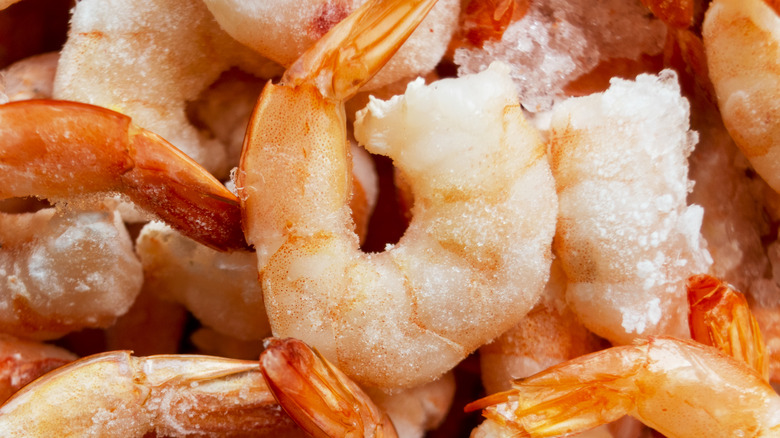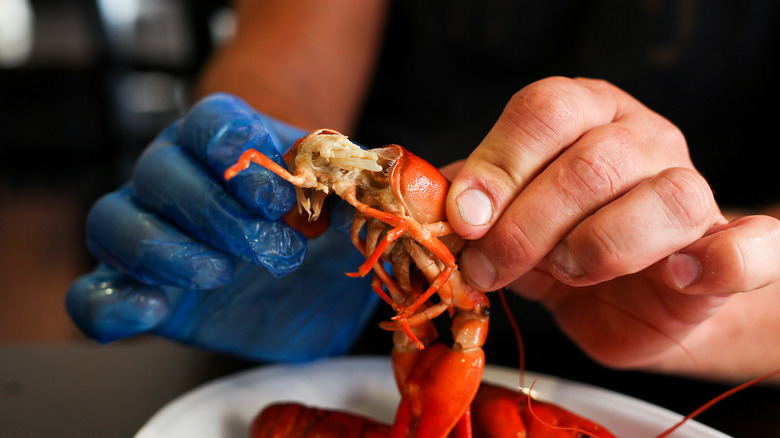The Best Way To Freeze Shrimp For Long-Lasting Quality
While there is technically no such thing as "fresh" shrimp unless you've caught them yourself, there is no reason to believe that the thawed shrimp at your local market are not of outstanding quality. Fresh shrimp are those that have typically been frozen and then thawed for display. You can ascertain the quality of the shrimp by making sure they smell clean and have a firm texture. These are the first things you need to look for when preparing your own shrimp for the freezer.
The National Center for Home Food Preservation points out that shrimp can be frozen either raw or cooked, with or without their shells. However, there is one part of the shrimp they advise you to remove entirely if you want to get the longest storage life out of your shrimp: their heads.
You absolutely need to remove their heads before engaging in any kind of freezing activity. Now, you may wonder, why exactly would this be the case? Wouldn't it be better to just keep the shrimp whole so as not to expose any of the inner meat to the harsh environment of the freezer? While that logic is sound, the heads of shrimp are actually rather detrimental to their overall longevity in the freezer.
Off with their heads!
The head of the shrimp is where most of the fat of the shellfish resides. As fat is equivalent to flavor, you could be forgiven for thinking that keeping the head would actually help the shrimp retain flavor and texture when it's frozen. In fact, the opposite is true. By removing the fat-filled head, the shrimp loses some moisture content but retains its crisp, crunchy consistency. Removing the head also removes the part of the shrimp that will spoil first.
Removing a shrimp's head can be a little tricky, especially if you've never done it before. Place the head of the shrimp between your thumb and index finger, then twist and pull simultaneously. The head should come off in one piece. Have some paper towels handy, as there will be a lot of juice released when the head comes off. Do not remove the shells, however, as they help retain flavor and protect the meat.
Once all your shrimp are prepared, package them in freezer containers or bags, being sure to leave at least a 1/4 inch of headspace, per NCHFP instructions. If you've cooked the shrimp, drain them well and cool them rapidly before putting them in the freezer. All told, they should last anywhere from three to six months in there. Just be sure to thaw them correctly, in a colander in the fridge, before you eat them.

